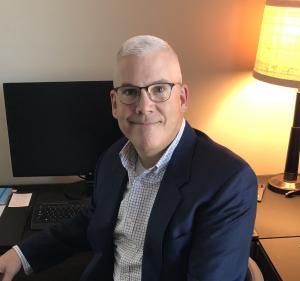Kalix recently partnered with Dr. David Hanson, founder of Winthrop & Associates, and a nationally recognized leader on fiscal strategy and sustainability for independent schools and higher education. With over two decades of service to educational institutions, Dr. Hanson will provide financial and governance expert advice to interested clients as part of Kalix’s independent school consulting services.
This is the first in a series of regular blog posts from Dr. Hanson.
When was the last time you, as a school leader, stepped back and assessed the health of your school from three intersecting lenses: financial, philanthropic and brand strength? A colleague said to me recently, “Even healthy patients need an annual physical, so why don’t schools do the same – even the healthy ones?”
Assessment Gaps and Challenges Facing Heads
In a recent short survey conducted by Kalix Marketing and Winthrop & Associates, LLC and sent to a range of independent school leaders, only 50% of respondents said, “Yes” when asked whether they had recently studied their target audience(s) to see how they might enhance decision-making. When asked how comfortable they are as leaders with the depth of information and data to make decisions regarding financial sustainability and brand strength, only 17% and 33%, respectively, said, “Yes, with no gaps.”
This data is compelling, yet concerning. Most school leaders do not have time to conduct an internal comprehensive “health assessment” to evaluate the long-term strength of their school’s brand strength and the direct connection to financial sustainability, as well as the drivers for donors’ willingness to give. These three lenses are highly interconnected, yet often treated and managed separately. Further, leaders have little baseline information about their school’s true financial viability, brand strength and philanthropic capacity. Even when they have some information, they are often unsure whether they have the correct data upon which to make decisions. Running a school is difficult and having the time to pause from day-to-day work to step back and assess an institution is often impossible.
The Ultimate Cost of an Unbalanced Budget
Higher education provides a predictive model for independent schools: While the outlook for higher education is now rated as “negative” by Moody’s 2018 Outlook Report for Independent Schools, the outlook for independent schools is only slightly better, rated as “stable” for the next 12-18 months, but only if demand remains healthy and a school has a strong balance sheet. Given higher education’s predictive trends over the last 20 years, it is likely the outlook for independent schools will worsen, not improve.[1]
Harvard professor Clayton Christensen and his colleague Michael Horn have predicted that a “host of struggling colleges and universities, the bottom 25% of every tier, will disappear or merge in the next 10 to 15 years.”[2] Why? Because the basic business model is broken with discount rates above 35%, inability of families to pay, inability to attract students (and revenue) to cover costs and increased debt. The same broken model exits for independent schools, but many leaders and boards are fearful of having these conversations.
Meeting Fiscal Challenges with a Forward-thinking Health Assessment
Schools are now facing unprecedented challenges, forcing institutions to merge or even close. While no one wants to see any school fail, economic headwinds faced by the industry are real. As a reasonable due diligence exercise, every head of school, board and senior management team should discuss possible extreme measures, which may include selling assets, relocating to lower-cost areas, merging with other schools, being acquired or even closure.
At a minimum, heads of schools and boards should use prudence to identify the key performance “health” indicators (KPHI) that would trigger this type of discussion, e.g., structural deficit ratio, coverage ratio, debt ratio, etc. Unfortunately, few schools assess their health and viability or develop these types of KPHI dashboards.
While all schools complete annual financial audits, those are purely backward looking and only go so deep into the prior fiscal year. Audits are not forward-looking and do not assess overall organizational health. Conducting a deep-dive health assessment with a prospective lens to evaluate risks, levers and intersecting variables is vital in this intensely competitive environment. Further, most schools budget and set tuition for only 1 to 2 years into the future, but do not plan for the next 10-20 years. This creates an incremental step function in most schools’ outlook and does not provide leaders and board members with long-range forecasts to make better decisions in the near term for longer-term success.
Having an unbiased, external assessment of the risks and opportunities facing a school in its particular market and in this economic environment is as – or more – important than conducting a retrospective financial audit. Yet, finding the time to ask staff to assess the long-range horizon is often impossible for thinly staffed institutions. This presents a challenging situation for boards and leaders, especially new leaders who are trying to think strategically with so many day-to-day demands.
Do you need help identifying your school’s KPHIs to create a more sustainable model? Kalix Marketing’s new partnership with Winthrop & Associates, LLC offers data-driven, customized solutions. Contact us.
Prior to founding Winthrop & Associates, LLC, Dr. Hanson spent 20 years serving academic and non-profit organizations, including serving in dual positions (chief financial officer and chief risk officer) for Phillips Exeter Academy, where he had responsibility for a $100M annual budget and all operating functions, as well as risk management. Prior to Exeter, Dr. Hanson was the vice president (chief financial officer) and senior vice president (chief operating officer) for Virginia Commonwealth University. He began his career in academic leadership at Emory University, where he spent 10 years in a variety of roles leading to his dual appointment as the associate vice president for administration and special assistant to the executive vice president. Dr. Hanson began his professional career practicing law.
Dr. Hanson holds a bachelor’s degree in marketing, a Juris Doctorate (with highest honors), two master’s degrees (education and business), and a doctorate in higher education management (focused on financial resource allocation and governance). Dr. Hanson is a member of both Beta Gamma Sigma and Phi Kappa Phi academic honor societies and is a double alumnus of the Fulbright Specialist Program, having served institutions in Pakistan and Scotland.
Dr. Hanson can be reached via email at david@winthropassociates.com.
¹ See 2019 Higher Education Report; see Will Half of All Colleges Really Close in the Next Decade? – Christian Institute
² See Will Half Of All Colleges Really Close In The Next Decade? – Forbes.com


